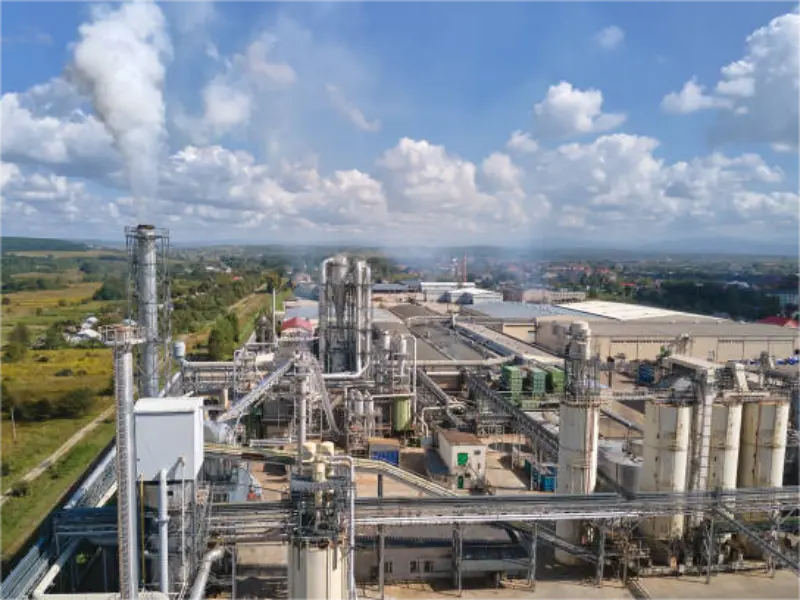- Electricity distribution is the final stage in the delivery of electricity from the transmission system to individual consumers.
- The power distribution sector is governed by regulations from bodies such as the National Electrical Safety Code (NESC) and the Federal Energy Regulatory Commission (FERC) in the US.
- Modern distribution systems are increasingly incorporating smart grid technologies, which use digital communications to improve grid management and efficiency.
Power distribution is a critical component of the electricity supply chain, responsible for moving electricity from transmission systems to end users. It ensures that electricity generated from various sources reaches consumers effectively and safely.
This system comprises several key components, including substations, distribution lines and advanced metering infrastructure, which together maintain the reliability and efficiency of electricity delivery. As the electricity grid evolves, power distribution continues to integrate new technologies and adapt to challenges such as renewable energy integration and cybersecurity.
Introduction to power distribution
Electric power distribution is the final stage of an electrical power system, involving the delivery of electricity from transmission systems to individual consumers. This stage is essential to ensure that electricity generated at power stations reaches end users safely and efficiently.
The distribution network is simply the system of wires that picks up where the transmission lines leave off. These networks start at the transformers and end at homes, schools and businesses. Distribution is regulated at the state level by PUCs and PSCs, which set retail electricity rates in each state.
The journey from power station to home
Electricity begins its journey at power stations, where it is generated from a variety of energy sources such as coal, natural gas, nuclear or renewable resources such as wind and solar. From there, it travels through high-voltage transmission lines stretching hundreds of miles. Once near its destination, the electricity enters a substation where transformers reduce the voltage to make it safe for local distribution. This lower-voltage electricity is then sent through a network of distribution lines that deliver it to homes and businesses.
Understanding the network: Components of electricity distribution
Substations: Facilities that use transformers to step down the voltage from the transmission lines to the distribution level.
Distribution lines: Cables and wires that carry low-voltage electricity directly to consumers.
Poles and towers: Structures that support overhead lines and equipment.
Meters and switches: Devices that measure electricity consumption and protect circuits by interrupting the flow of electricity in the event of faults.
Regulatory and safety standards in electricity distribution
Power distribution is highly regulated to ensure safety and reliability. In the United States, organisations such as the National Electrical Safety Code (NESC) and the Federal Energy Regulatory Commission (FERC) set standards and regulations that govern the construction, maintenance and operation of distribution networks. These standards are critical to preventing accidents and ensuring that the delivery of electricity remains consistent and safe.
Also read: How the US became the world’s leading nuclear power generator
Technological innovations in power distribution
Smart Grids: These use digital technology to monitor and manage the transport of electricity from all generation sources to meet the varying electricity needs of end users.
Automated switches: Improve system reliability by quickly isolating faults and rerouting power flows.
Advanced metering infrastructure(AMI): Enables real-time data collection and improves energy efficiency by enabling two-way communication between utilities and consumers.
Challenges of modern power distribution
Aging infrastructure: Many distribution networks are decades old and require significant upgrades to handle modern electrical loads.
Integration of renewables: As more renewable energy sources are connected to the grid, managing variable power output becomes increasingly complex.
Also read: Japan foresees 35-50% electricity demand surge by 2050, banking on renewables
Cybersecurity: Protecting the grid from cyber-attacks is paramount as the system becomes more digitised and interconnected.
The future of power distribution
Looking ahead, the future of power distribution is likely to be shaped by the drive towards sustainability and further technological integration:
Decentralisation: The move towards more localised generation and storage solutions, such as solar panels and battery systems, which reduce the strain on traditional distribution networks.
Electric vehicles (EVs): The rise of electric vehicles and the need for new infrastructure to support vehicle charging.
Internet of Things (IoT): More devices connected to the grid will provide utilities with the data needed to optimise energy flows and improve system efficiency.

